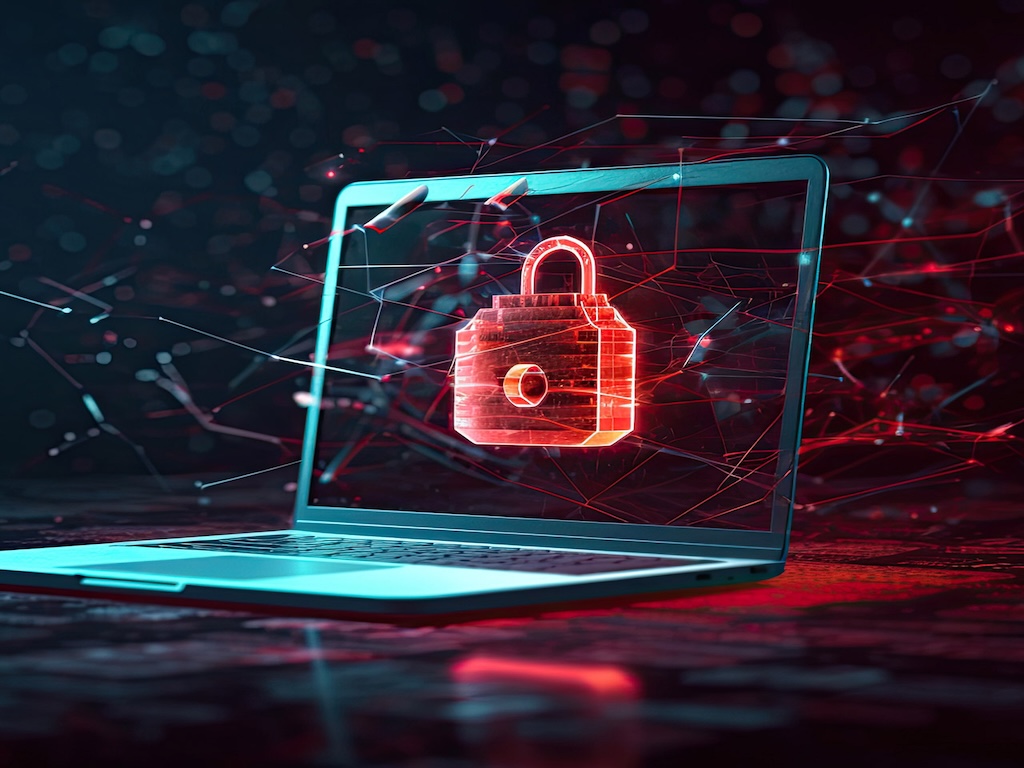Understanding Ransomware
Ransomware is a sophisticated form of malware designed to hold your data hostage, effectively locking you out of your files and systems. It encrypts your data using complex algorithms, making it inaccessible without a unique decryption key that only the attackers possess. To regain access, victims are typically required to pay a ransom, often demanded in cryptocurrency to maintain the attacker’s anonymity.
Types of Ransomware
There are several types of ransomware, each with its own characteristics:
- Crypto Ransomware: This type encrypts files on a system, rendering the content useless without the decryption key.
- Locker Ransomware: Instead of encrypting files, this variant locks users out of their entire system.
- Scareware: This type uses fake alerts to trick users into paying for unnecessary “fixes.”
- Doxware: Also known as leakware, this ransomware threatens to publish stolen sensitive data unless a ransom is paid.
- Ransomware-as-a-Service (RaaS): This is a subscription-based model where ransomware tools are sold or rented to affiliates, making it accessible even to cybercriminals without advanced technical skills.
- Wiper Malware: While not technically ransomware, this malicious software disguises itself as ransomware but actually destroys data permanently.
How Ransomware Works
Understanding the lifecycle of a ransomware attack can help in developing effective prevention strategies. Here’s a typical ransomware attack process:
- Initial Infection: Ransomware often enters systems through phishing emails, malicious attachments, compromised websites, or exploit kits.
- Stealth and Propagation: Once inside, the ransomware may lie dormant, spreading to other connected systems and devices.
- Data Encryption: The malware then begins encrypting files, making them inaccessible to the user.
- Ransom Demand: After encryption, a ransom note is displayed, demanding payment for the decryption key.
- Potential Data Exfiltration: In some cases, attackers may also steal sensitive data before encryption, threatening to leak it if the ransom isn’t paid (double extortion technique).
Protecting Against Ransomware
Now that we understand what ransomware is and how it operates, let’s explore comprehensive strategies to protect against it:
1. Implement Robust Backup Solutions
One of the most effective defenses against ransomware is a solid backup strategy:
- Follow the 3-2-1 rule: Keep at least three copies of your data, on two different types of media, with one copy stored off-site.
- Regularly test your backups to ensure they can be restored successfully.
- Keep some backups offline or air-gapped to prevent them from being encrypted by ransomware.
2. Keep Systems and Software Updated
Cybercriminals often exploit vulnerabilities in outdated software:
- Regularly update your operating systems, applications, and firmware.
- Enable automatic updates whenever possible.
- Pay special attention to security patches and apply them promptly.
3. Employ Strong Security Software
Use comprehensive security solutions to protect your systems:
- Install reputable antivirus and anti-malware software on all devices.
- Consider using specialized ransomware protection tools.
- Ensure your security software is always up-to-date.
4. Educate and Train Users
Human error is often the weakest link in cybersecurity:
- Provide regular cybersecurity awareness training to all employees.
- Teach users to recognize phishing attempts and suspicious emails.
- Encourage a culture of security consciousness in your organization.
5. Implement Network Segmentation
Limit the potential spread of ransomware within your network:
- Separate critical systems and data from the general network.
- Use virtual local area networks (VLANs) to isolate different parts of your network.
- Implement strong access controls between network segments.
6. Use Email and Web Filtering
Many ransomware attacks start with malicious emails or web content:
- Implement robust email filtering to block suspicious attachments and links.
- Use web filtering to prevent access to known malicious websites.
- Consider sandboxing suspicious files before they enter your network.
7. Implement Least Privilege Access
Restrict user permissions to minimize the potential impact of a ransomware infection:
- Give users only the access they need to perform their jobs.
- Regularly review and update access permissions.
- Use multi-factor authentication (MFA) for all user accounts, especially for privileged access.
8. Develop and Test an Incident Response Plan
Be prepared for the worst-case scenario:
- Create a detailed incident response plan that outlines steps to take in case of a ransomware attack.
- Assign roles and responsibilities to team members.
- Regularly test and update your plan through tabletop exercises and simulations.
9. Monitor Network Activity
Detect potential ransomware activity early:
- Implement network monitoring tools to detect unusual activity.
- Use Security Information and Event Management (SIEM) solutions for real-time analysis of security alerts.
- Consider using artificial intelligence and machine learning tools for advanced threat detection.
10. Be Cautious with Remote Desktop Protocol (RDP)
RDP is a common entry point for ransomware:
- Disable RDP if it’s not necessary.
- If RDP is required, use a Virtual Private Network (VPN) and multi-factor authentication.
- Limit RDP access to specific IP addresses and keep it behind a firewall.
What to Do If You’re Hit by Ransomware
Despite best efforts, ransomware attacks can still occur. If you find yourself a victim:
- Isolate the infected systems immediately to prevent further spread.
- Report the incident to law enforcement.
- Do not pay the ransom, as this doesn’t guarantee data recovery and encourages further attacks.
- Restore your systems from clean backups after ensuring the ransomware has been completely removed.
- Conduct a post-incident review to identify how the attack occurred and improve your defenses.
Ransomware is a serious threat in today’s digital world, but with the right precautions and strategies, you can significantly reduce your risk of falling victim to these attacks. By implementing robust backup solutions, keeping systems updated, educating users, and following the other best practices outlined in this guide, you can create a strong defense against ransomware and other cyber threats.Remember, cybersecurity is an ongoing process. Stay informed about the latest threats and continuously adapt your defenses to stay one step ahead of cybercriminals. With vigilance and the right strategies, you can protect your valuable data and systems from the growing threat of ransomware.





